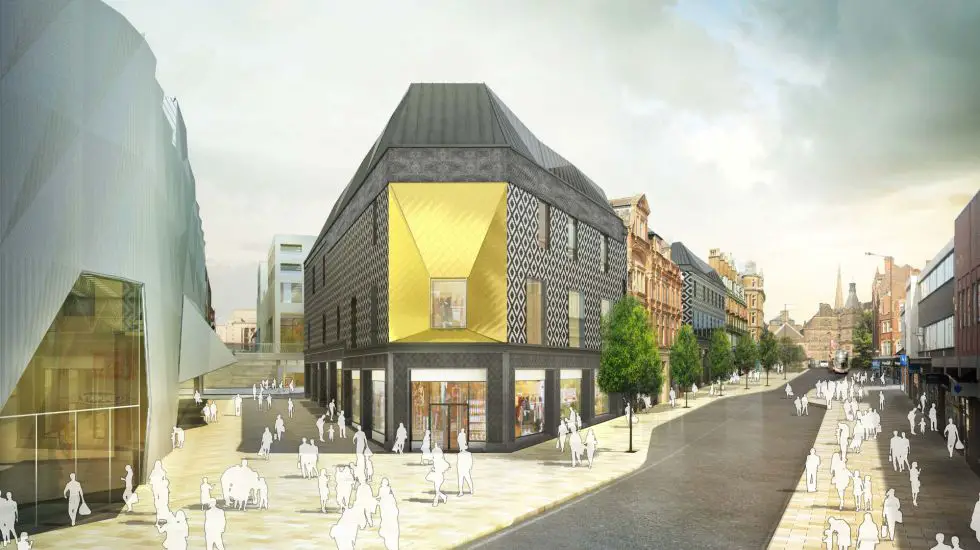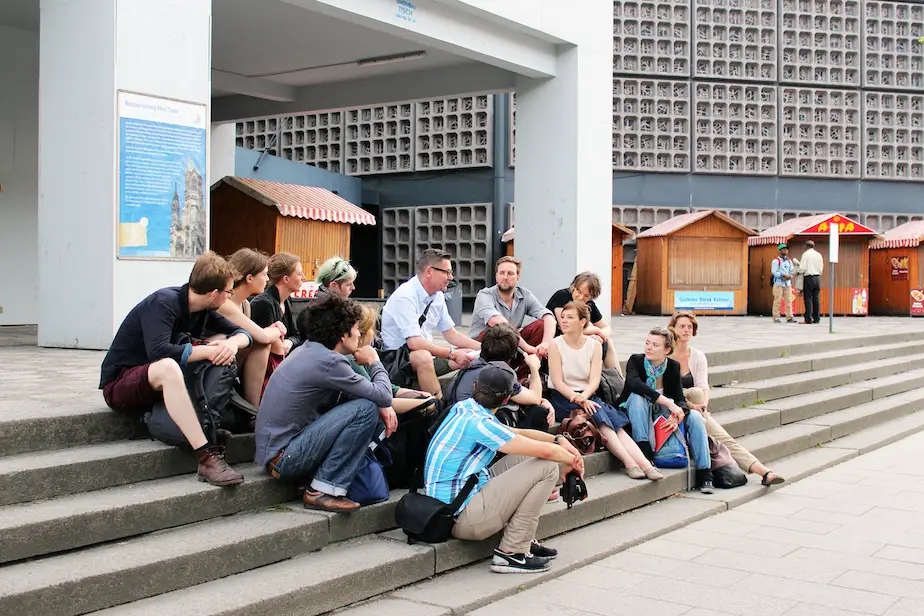Driving into London by car is an oddly seamless experience. The motorway never relents, meaning that motorists can dissect the capital’s suburban semis and Georgian terraces to float into the heart of Zone 1 without ever having to leave the luxury of three lanes.
One of the most surprising aspects of this journey for those entering London for the first time is the interface between these motorways and the passing neighbourhoods. Vehicles speed by bedroom windows, front gardens, football pitches, and even school playgrounds separated only by the width of a pavement or the height of a flyover. The never-ending hum motorway traffic is rarely mitigated, not even by the simple sound barriers that feature along so many comparable roads across the world. On these brutally cosmetic terms alone, it’s not hard to see why urbanist Sir Peter Hall dedicated a chapter in his 1982 book Great Planning Disasters to the London motorway.
But, London’s motorway problems are far from limited to cosmetics. Before even considering vehicle circulation, these long stretches of black asphalt raise the temperature of their local environment by absorbing radiation and contributing to a microclimate known as the urban heat island effect, a phenomenon that adversely impacts the atmosphere, energy consumption. This is compounded by the traffic the motorways support to add to their already disproportionate contribution to the capital’s man-made air pollution, which according to a 2012 London Assembly report is responsible for up to one in every twelve deaths in the city. This troubling statistic is unlikely to be redressed unless London’s relationship with its infrastructure changes.

As the UK emerges from the wettest winter on record – the latest episode in a series of back-to-back droughts and floods – the assumption that the city can continue to escape the effects of a changing climate reality appears increasingly naïve. Although London largely escaped the flooding that devastated the south of England, there are 24,000 homes identified as at significant risk of flooding by the Environment Agency, 14,000 of which have no prevention plans whatsoever. Moreover, the effects of a changing climate are already remarkable. Last year the London Ambulance Service saw a 20% rise in incidents during the summer heatwave, and research by Professor Ben Armstrong at the London School of Hygiene and Tropical Medicine attributes hundreds of premature deaths to those exorbitant temperatures.
With London smog levels purported to be as high as those that forced Paris to introduce emergency measures in last few weeks, should the city’s motorways be accepted as a polluting inevitability? Last week’s smog alert cannot be the result of Saharan dust alone. The negative externalities of London’s motorways mean that without radical transformation to help the city adapt and improve its environment for future challenges their current value is questionable in the long term.
If the built environment, like all design, is underpinned by intention, then the state of London’s motorways reflects wider social and political interaction. So urban spaces like London’s motorways that are shaped by our imagination, in turn help to shape our imagination. Consequently the act of subverting these totems of pollution and reinventing them as places that can increase biodiversity, improve water management and keep the city cool, could be environmentally transformative as well as have wider social and political consciousness.
But, London’s apparent appetite for introducing green infrastructure seen in the growth of project competitions inspired by New York’s High Line – most notably spawning Thomas Heatherwick’s proposal for a garden bridge across the Thames – obscures its looming green infrastructure crisis. The city lost 215 hectares of open space land between 2009-2012 according to the London Assembly’s Environment Committee, the equivalent of the area of Regents Park, Holland Park, Green Park, St James Park, and two football pitches combined. This statistic reveals a worrying disconnect between ideas and praxis.
The problem is that although London represents a locus of ideas and ambitions for the green economy these are all too often not reflected in the citywide planning realities. Why not conserve and enhance the city’s beauty by establishing a Greater London National Park as proposed by the geographer Daniel Raven-Ellison? Or resolve cyclist/lorry conflict by making large loads the exception rather than the rule as Sam Jones from FAT suggests? In the context of the capital’s changing environmental landscape these are sort of measures that could create the positive frisson needed for a change in the city-citizen-environment relationship.

This type of thinking can be extended specifically to the city’s pollutant motorways. Bermondsey-based architects Bell Philips called for all of central London’s elevated roads to become green arteries, where green walls are erected along all flyovers to increase biodiversity, reduce noise pollution and improve air quality. Revitalising often-disregarded spaces below flyovers has been shown in a variety of contexts to provide good public amenities that can contribute to reduced carbon emissions and even improve flood defences.
Given that London’s growing population will only increase pressure on both green space and motorways, changing the city’s approach to these roads is an emerging necessity. If it’s accepted that vehicular traffic needs will safeguard London’s motorways from obsolescence for the time being, then, aside from trying to reduce speeds and noxious diesel consumption, engineering the continual-creaking road infrastructure for greener ends will be key to adapt to the immediate and future challenges.
The capital’s current building boom belies the inclusive and concerted approach required for this transition to occur as it is failing to address the cityscale health-environment-climate problematic. To reverse this trend, legislative changes are required. One opportunity to make this change is in the on-going formulation of a new London Plan, currently open for public consultation. This purports to position the capital as a ‘city that becomes a world leader in improving the environment’.
A starting point for a changed London Plan could be to make large-scale developments explicitly responsible for the provision of green amenities to their immediate local communities. This could occur on a far more participatory basis than delivered under current regulation for public good provision under planning gain; where moot points include the dubious notions of affordability under Section 106 negotiations, and the non-negotiable Community Infrastructure Levy that can be used to ‘serve’ communities far from developments in entirely different part of the local authority. Both of these measures fail to really engage local people in meaningful ways.
Developers’ links to their areas need to become more than a box ticking exercise of public consultation and evolve into a genuine commitment to the local area. The outreach achieved in participatory budgeting initiatives in South America show that integrating the negotiation of tangible green infrastructure developments with local communities in planning guidance is possible. This could accelerate city climate change adaption while diffusing the accountability for urban greening from the responsibility of City Hall and local councils already facing budgetary constraints, between more built environment stakeholders, namely community members and developers.
In this scenario, planning applications would not hinge solely on considerations centred on the proposed development itself, but would need to include measures that help local communities achieve their own environmental objectives. This could be integrated into the neighbourhood plans to supplement the current meagre budgetary provisions. For example if a community living near a motorway faces a local development, it can collectively decide through a neighbourhood plan to introduce a green retrofit on the motorway that improves its environment. This means that the developer targeting an area in the vicinity of a motorway would have the responsibility of greening the roads they are harnessing to maximise footfall on their greyly paved retail space intentions. This type of dialogue between developers and their communities could result in these types of mutually beneficial quid pro quos.

Green infrastructure proposals are not unachievable and do not have only serve as a Trojan horse for wider gentrification. New developments in the city should not be accepted as a derogation of the local communities they are constructed in. A new paradigm that is not politically, socially or environmentally alienating ought to be sought.
Why not start with the city’s most polluting manifestations: its motorways? Almost fifty years have passed since the London Motorway Box was conceived, and while it was scrapped before its extensive ringway ambitions were fulfilled, its dysfunctional legacies remain unchanged. Why entrench this status quo when repurposing these roads beyond a function to support an A-B journey is possible? Co-opting the veins of the city’s polluting operational system for environmental ends could renew citizens’ relationship with the built environment and symbolise a new intention for a future London.


